#Edward Wilson
Text

edward wilsons illustration of mcmurdo sound
#art#polar exploration#my post#edward wilson#the worst journey in the world#terra nova#terra nova expedition#whenever i see coloured images of the poles i get it completely
176 notes
·
View notes
Text




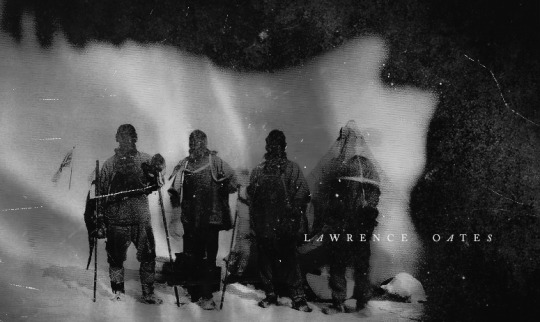

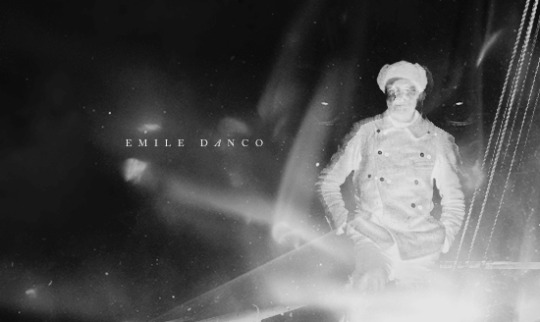


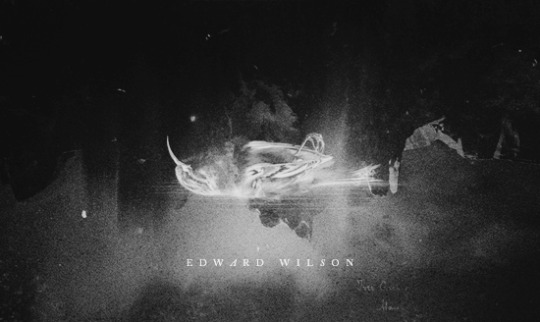

The heroic age of Antarctic exploration
- after The Terror opening credits
#polar exploration#antarctica#heroic age#roald amundsen#apsley cherry-garrard#frank wild#ernest shackleton#lawrence oates#xavier mertz#belgrave ninnis#arnold spencer-smith#hjalmar johansen#emile danco#edward wilson#robert falcon scott#belgica#endurance#terra nova#fram#LOTTA TAGS. LOTTA BOYS.#sorry if the gutters are weird i hate this new post editor so much lmao#my: graphic#*
633 notes
·
View notes
Text
POLAR EXPLORERS SHOWDOWN: ROUND THREE


134 notes
·
View notes
Photo
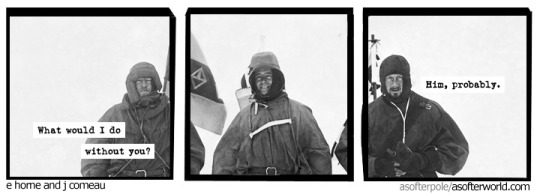
well, him first.
46 notes
·
View notes
Text

This is the second in our occasional series featuring luminaries of stage and screen with a strong personal or professional connection with Northeast England, inspired by @robbielewis. This time, Edward Wilson (1947-2008).
Edward Wilson was born into a South Shields mining family in 1947. He performed with the National Youth Theatre and aged 19, formed his own company, the South Shields Youth Theatre, staging their plays at the local Pier Pavilion.
According to his obituary in The Guardian;
"…The local press raved, while stern-faced local Labour mandarins wondered if the radical ideas on their stage were too dangerous. "Kitchen sink drama" had arrived, and so had Ed Wilson…"
He attended Manchester University, and continued acting and directing at the NYT, for which he was artistic director from 1987 to 2003 (or 2004, depending on the source). He also demonstrated a talent for business and administration, successfully negotiating major corporate sponsorships and Lottery funding to ensure the NYT’s ongoing viability.
On television, he had a major role in 35 episodes of the 1970s working-class family saga, When the Boat Comes In, as Billy Seaton, a radically minded, newly qualified doctor working in impoverished pre-NHS Tyneside communities. Billy Seaton's complicated and often combative relationship with Seaton family friend, capitalist chancer Jack Ford (James Bolam), was an ongoing theme that brought out some intense and compelling performances from both actors.
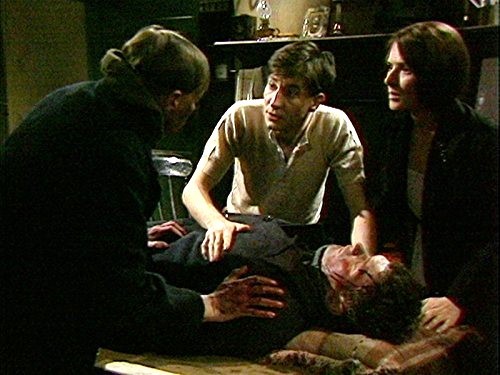
Edward Wilson was one of the few original cast members to return for the final, fourth series in 1981, where the action largely shifted away from Tyneside, and explored left-wing politics surrounding the Spanish Civil War.
Other television appearances included the historical dramatised documentary series, Fall of Eagles, as Russian revolutionary Julius Martov (with Patrick Stewart as Lenin and Michael Kitchen as Trotsky), and a regular role in the 1980s police drama, Rockliffe’s Babies.
In 2004, he went to work in the US as the director of the Los Angeles Young Actors Company, was diagnosed with cancer in 2007, and passed away in 2008, aged 60.
By all accounts he was extremely well loved and respected by the actors he had discovered, mentored and directed during his time at the NYT, including Daniel Craig, who provided ongoing financial and practical assistance during his final illness.
The Independent:
"…Ed Wilson did not merely select the members of the NYT during his time there – he championed each and every one, and retained an interest in them long after they had left the company. A noted wit, he was as clever as he was stylish, and he had an undoubted genius for friendship. When tragedy or bereavement struck, he was magnificent, and he would move mountains to help a friend in need..."
See also, John Nightingale, fellow alumni of the National Youth Theatre;
Sources: the Independent, The Guardian, IMDb
#social history#working class history#kitchen sink movement#social justice#northeast england#british actors#british theatre#edward wilson#national youth theatre#tyneside
17 notes
·
View notes
Note
In your opinion just what was it that made Bilson so magnetic, so captivating?
oh man, honestly who can say...... but all evidence points to the fact that he really, really, really was.
i mean, first of all, freaking look at him — part of it was definitely just that sheer leyendeckerian handsomeness that just radiates out of every photo and painting of him even a century later.


if you're really interested in bilson i highly recommend the Seaver biography which of course is a polished bit of hagiography but does give genuine insight into his childhood/young adulthood and helps you see how he became who he was.
but i really like how spufford describes him modifying his youthfully severe asceticism after his bout with tuberculosis:
The peacemaking touch, the sweet temper, and the limitless patience his polar friends admired were also deliberate creations. They were the equivalent in his human dealings of the potato and watercress diet, and he had had to struggle sternly to stick to them. He would indicate disapproval by withdrawing - a damning chill would settle on his face at 'indecent' humour - but he had conquered a naturally caustic tongue. As a child he'd been known in his family for fits of rage when he would lay about him verbally, and Wilson the Cambridge student had sometimes talked daggers; these had gone, though at close quarters aboard Discovery, he wrote to Oriana, 'God knows it is about as much as I can stand at times, and there is absolutely no escape.' Expeditions required restraint. They could not work socially without it. Wilson's remorseless interpretation of the divine command to love thy neighbour made him, in this sense, a consummately gifted explorer. And he faithfully discharged the corresponding obligation he now saw, to look after himself so far as it lay in his power.
largely it seemed it was this combination of inward discipline and outward kindness that drew people to him: he was, as spufford notes, a model Edwardian of the most admirable kind— especially as one of the oldest members of the expedition, in his late 30s amongst a bunch of rowdy twenty-somethings who were (whether they were conscious of it or not) competing for his attention and care. hashtag M&Ms. he was invariably called "uncle bill" on the expedition—everyone viewed him as utterly reliable, and without fail he was a patient listener and confidant to all.
in frank debenham's 1952 memoir of the expedition, he devotes a whole chapter to bilson, describing him in the most loving, nostalgic tones. discussing the time spent in the Discovery hut waiting for the sea ice to freeze after the depot journey:
Yet to many of that small party it was the happiest period of the expedition. As Cherry-Garrard says in his Worst Journey in the World, there was "just enough to eat and keep us warm, no more—no “frills or trimmings.” To that I would add "there was Bill, and fewer people to share him with.”
and then later after discussing bill's spiritual and ascetic habits and hard working tendencies he adds:
But one is apt to give an impression of over-seriousness-of a man allowing no time or inclination for the lighter side of life. How false an impression that would be is clear if one recalls one or two of the many incidents that come to mind showing him with the spirits of a laughter-loving schoolboy. For between and amongst all the hours of hard work there were moments of the lightest gaiety when he entered into or led the fun that in every possible form made that winter the cheeriest time in the lives of many there.
now, ursula k le guin, discussing the power of scott's final record, observes pointedly:
His companion Edward Wilson, whose paintings are perhaps the finest visual record of Antarctica, kept a diary of the polar journey too. Wilson was a far sweeter, more generous man than Scott, and his diary is very moving, but it has not the power of Scott’s—it is not a work of art; it records, but it does not ultimately take responsibility for what happens. Self-absorbed, willful, obsessed, controlling, Scott was evidently an artist born.
this sort of stereotype of bilson as "sweet, generous" and often even "sainted" is certainly a function of the combined effects of Seaver's hagiography (produced with the cooperation of Oriana Wilson) as well as the collective recognition of Wilson by the survivors as dominated by Cherry's particularly emotional depiction.
because as we know from our look at the toxic polycule and bill's role in the breakup—his plain cruelty to shackleton out of loyalty to scott and to some grand, idiotic idea of geographic honor within the rarefied world of exploration—he was not perfect at all. which is what makes him interesting and even lovable from a historical distance. but of course that is a different phenomenon altogether than what those who knew him experienced, which we never can through the distance of time and text.
returning to spufford, who says:
I think this sharp distinction between self and world is the clue to him. In him the Edwardian taste for pushing things to their limit turned exclusively inwards. He would never willingly contemplate harming someone else, and the parade-ground fantasies of the period seemed dangerous and wicked to him. But you might say he drilled his own soul. Rather than assuming that the order of the world was unbreakable, and therefore safe for adventure, he had the martyr's sense of the world's fragility, and the likelihood of hurting other people if he did not apply the greatest delicacy and caution. Only himself did he see as the imperialists saw Africa, or the reformers saw the social system, or the warmongers saw Germany. Only when he looked at himself was his imagination presented with a recalcitrant lump against which strong measures were called for.
so did this "all-in" approach to personal improvement and discipline contribute to or create the powerful field of charisma that he gave off? or was he just naturally ~like that~, and all his effortful, excessive self-work merely additional?
reading what those who knew him have to say about him, it's apparent enough that words tend to fail when trying to capture those precise qualities which made him so attractive.
scott certainly tried, though. in his final writings he described wilson as "a brave, true man ... the best of comrades and staunchest of friends." to be near bill clearly seemed to inspire a desire to be better, to be good, at least enough to be worthy enough to stay as close as one could. and so at the end scott wanted to hold him, and so did.

54 notes
·
View notes
Photo
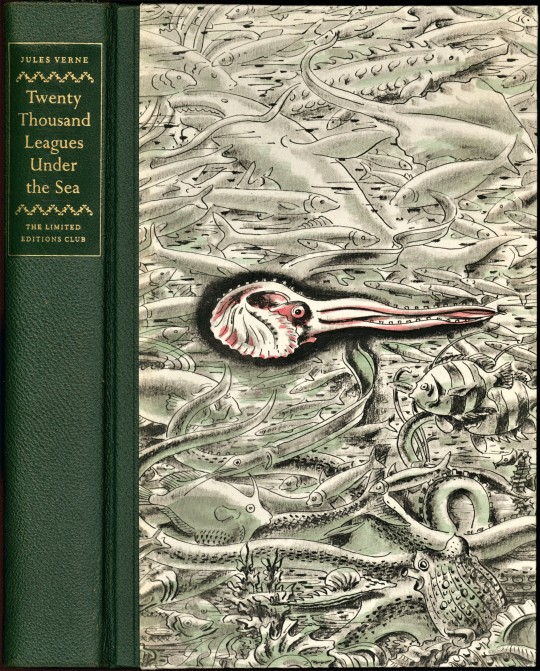

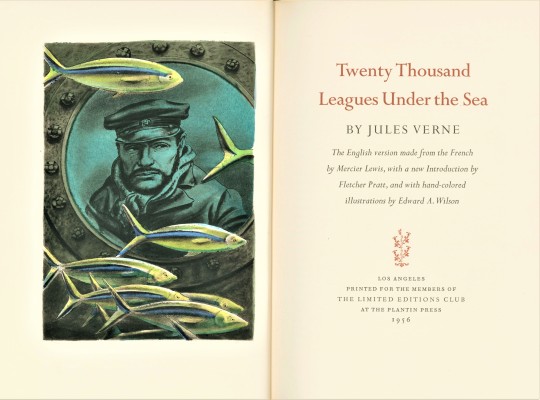
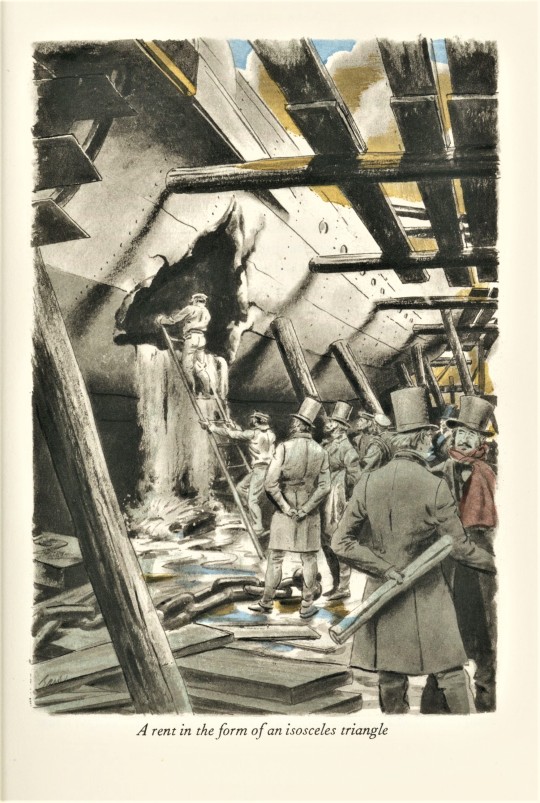




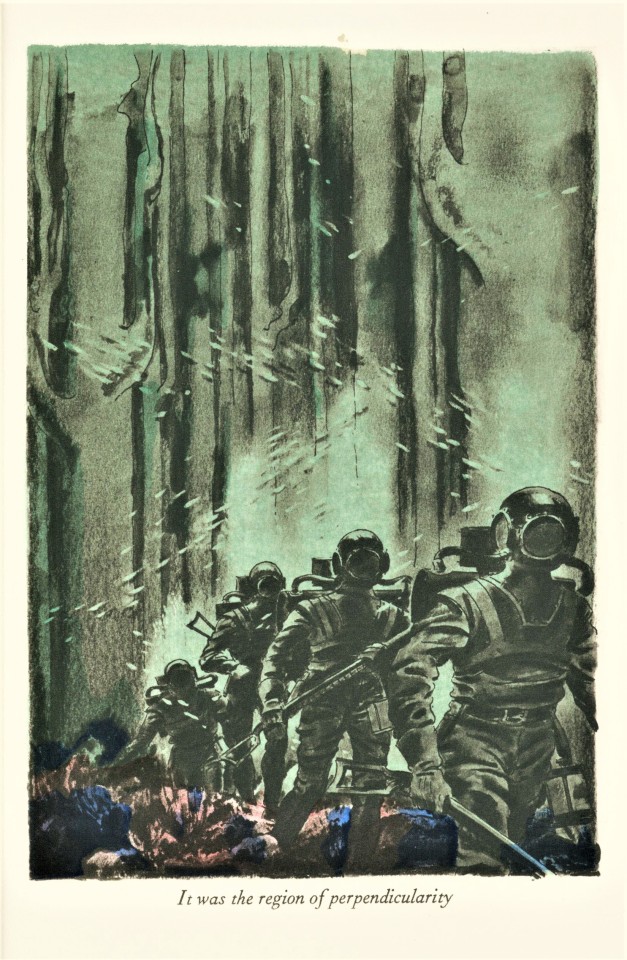
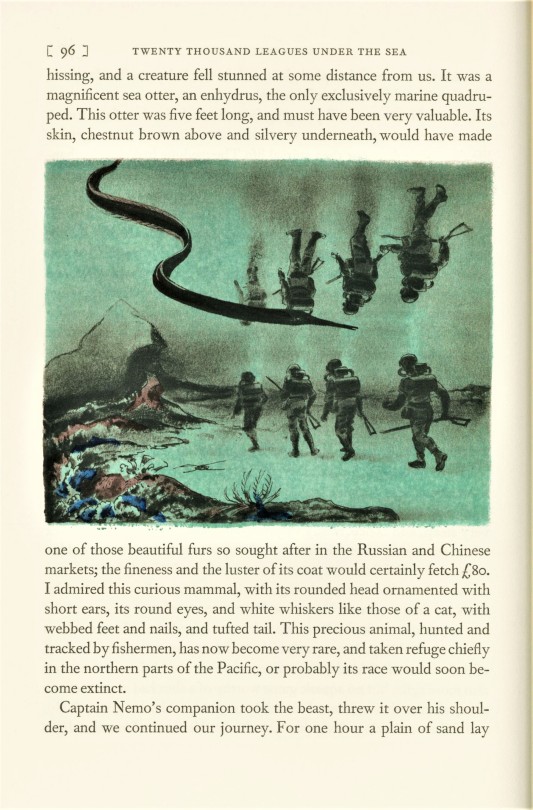
It’s Fine Press Friday!
This week we bring you Twenty Thousand Leagues Under the Sea by Jules Verne, illustrated by Edward A. Wilson, and printed in 1956 for the members of The Limited Editions Club at The Plantin Press in an edition of fifteen-hundred copies signed by the illustrator.
This classic of science fiction adventure novels was first published in a serial format, from March 1869 to June 1870, as part of a Verne’s series called Voyages Extraordinaries, in Magasin d'éducation et de récréation, a magazine founded by the French editor and publisher Pierre-Jules Hetzel. There would be a total of fifty-four novels in this series published during the author’s lifetime, between 1863 and 1905.
This novel is considered to be one of Verne’s greatest works, along with Around the World in Eighty Days and Journey to the Center of the Earth, which are a part of the same series. The books were meant to depict historical and scientific knowledge. In particular, Verne’s descriptions of submarines would turn out to be surprisingly accurate considering the primitive technology that existed at the time he wrote the book.
Once a novel completed its serial release in the magazine, it would be published in book form, typically in three editions, one without illustrations, a second with a few illustrations, and one richly illustrated version in a deluxe octavo format.
The first deluxe edition of Twenty Thousand Leagues Under the Sea was published in November, 1871. Just in time for Christmas shoppers. The French academic painter Alphonse de Neuville and Eduard Riou together produced 111 illustrations for the book. Eduard Riou illustrated six of Jules Verne’s novels.
The tradition continues here, where this text is accompanied by the work of American illustrator, printmaker and commercial artist, Edward A. Wilson. Wilson’s illustrations were transferred and printed in gravure by the Photogravure and Color Company of New Jersey. The gravure’s were then hand colored in the studio of Martha Berrien in New York. The book is quarter bound in green leather and covered with a paper that has been printed with a decorative illustration and hand-colored. The type was set in Monotype Fournier and printed by Saul and Lillian Marks at their Plantin Press in Los Angeles on a paper made especially for this book by the Curtis Paper Company.
Use this link for more Fine Press Friday posts!
Use this link for more Limited Editions Club posts!
Teddy- Special Collections Graduate Intern.



#Fine Press Friday#Fine Press Fridays#juels verne#Edward A. Wilson#edward wilson#Limited Editions Club#twenty thousand leagues under the sea#Voyages Extraordinaries#science fiction#Pierre-Jules Hetzel#Saul and Lillian Marks#photogravures#Photogravure and Color Company#teddy#Martha Berrien#Curtis Paper Company#fine press books#plantin press
125 notes
·
View notes
Text
get bilson'd.
(original: x)
#Edward Wilson#Terra Nova#Antarctica#I AM SORRY GUYS#this wouldn't leave my head#brainyraccoons draws#tagging as art so I can find it later lol
6 notes
·
View notes
Text
I can't believe it's Greenhithe day and I'm posting about Antarctic explorers instead. The Terra Nova expedition has taken over my entire brain recently, to the extent that I have made my first foray into RPF.
Get your repressed but polyamorous Edwardians here!
Apsley Cherry-Garrard/Edward "Bill" Wilson/Oriana Wilson, M, 2853 words
In the autumn of 1908, Apsley Cherry-Garrard went to stay with Dr. Edward Wilson and his wife Oriana at a hunting lodge in Scotland owned by Cherry-Garrard’s cousin Reggie Smith. These pages were recently discovered stuffed into the lining of a trunk in the attic of the Cherry-Garrard family home at Lamer, and appear to be from the explorer’s private journal written during this period. Given the content of these pages, it is readily apparent why they were hidden, for they would have shocked the sensibilities of Edwardian society. Never before published, these entries offer a new insight into the relationship between these key figures of the Heroic Age of Antarctic Exploration.
#My fic#polar exploration#terra nova expedition#Polar explorer rpf#Apsley Cherry Garrard#Edward Wilson#Oriana Wilson#Cold boys southern edition
8 notes
·
View notes
Text

I joke about the relationship between Wilson and Scott being “gay” but honestly I just love the idea of shared affection and achievement, candidly expressed, between two men—regardless of the presence or absence of a romantic or sexual dimension.
I think a lot about how Bill died before Scott and Scott threw his arm across the body that had belonged to his closest friend as he himself lay down to die. It’s just beautiful for people to love each other like that, whether it’s romantic or not.*
*But I bet they visited each other’s poles at least once though
7 notes
·
View notes
Text
Each living form could be viewed as "an evolutionary experiment, a product of millions of years of interaction between genes and environment."
"In the Name of Eugenics: Genetics and the Uses of Human Heredity" - Daniel J. Kevles
#book quote#in the name of eugenics#daniel j kevles#nonfiction#edward o wilson#edward wilson#evolution#experiment#genes#genetics#environment#interaction
0 notes
Text
POLAR EXPLORERS SHOWDOWN: BONUS ROUND

#polar exploration#poll#terra nova#bonus round#robert falcon scott#edward wilson#lawrence oates#birdie bowers#edgar evans
6 notes
·
View notes
Photo

I think of your face among all those faces, beautiful and devout
97 notes
·
View notes
Text
i love wes anderson's regulars because if i was a famous director i too would only do stuff with my friends and include them in everything i do
#wacu (wes anderson cinematic universe)#wes anderson#bill murray#adrien brody#owen wilson#jason schwartzman#tilda swinton#moonrise kingdom#edward norton#the darjeeling limited#the grand budapest hotel#fantastic mr fox#isle of dogs#asteroid city#the french dispatch#the royal tenenbaums#rushmore#bottle rocket#chrasillasss
2K notes
·
View notes
Text

Nude on Dune
1936
Edward Weston
2K notes
·
View notes
